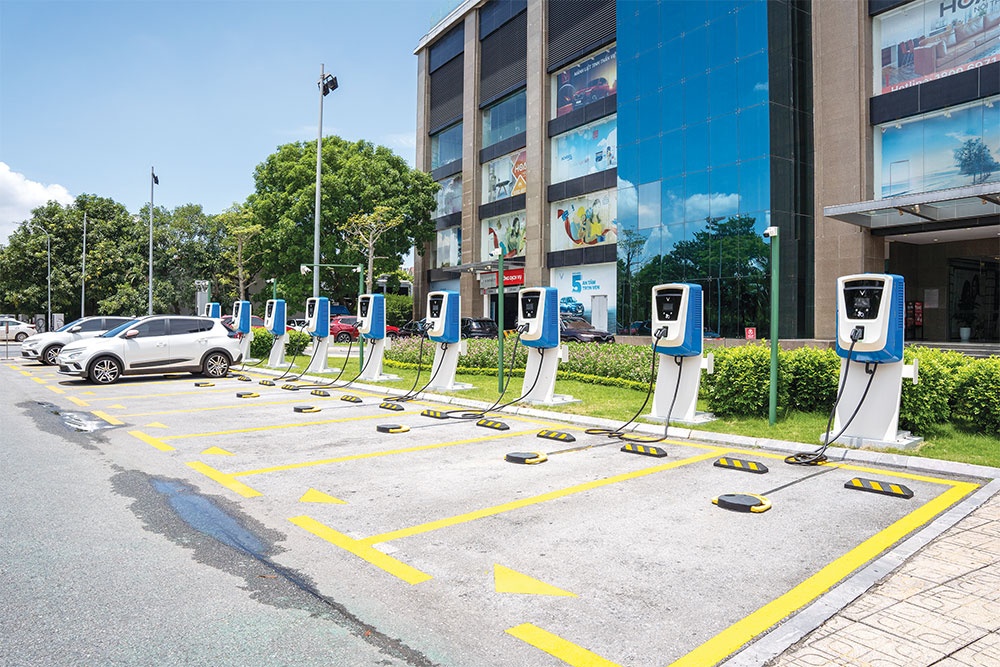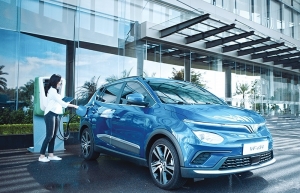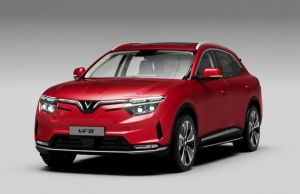Collaborations necessary for Vietnam to embrace EV boom
According to the Global EV Outlook 2022, the International Energy Agency (IEA) reported in May that the electric vehicle (EV) industry is one of the most active clean energy markets in the world.
 |
| VinFast is hoping to offer 3,000 charging stations in Vietnam by the end of the year |
A decade ago, global sales of EVs sat at a meagre 120,000. Last year, more EVs were sold weekly than in all of 2012 combined, and about 10 per cent of worldwide car sales were EVs, quadrupling their 2019 market share.
This raises the overall number of EVs worldwide to almost 16.5 million, which is three times more than in 2018. In the first three months of 2022, it is anticipated that two million EVs will be sold, up 75 per cent on-year.
In fact, EVs are an irreversible trend and will be the future as governments move towards clean energy and respect the environment.
According to the IEA, supporting laws and policies are a major factor in the development of the EV industry. Likewise, automakers want to electrify their production units in an attempt to surpass their declared objectives. In addition, the number of new EVs introduced in 2021 was five times more than those in 2015, enhancing their appeal to customers. Approximately 450 models of EVs are now available on the market.
Under a scenario presented by the Vietnam Automobile Manufacturers’ Association (VAMA), Vietnam would strive for 100 per cent of EVs by 2050, with a 3-phase plan. The first phase covers until 2030, followed by a period of fast expansion in the decade afterwards. Stable expansion would then follow in the 2040-2045 period, followed by industrial consolidation from to 2050.
“The growth of automobiles powered by clean energy and renewable energy would contribute progressively to Vietnam’s pledge to attain net-zero emissions by 2050,” said VAMA spokesperson Dao Cong Quyet.
In the next few years, it is anticipated that Vietnam will be Southeast Asia’s most promising market for the development of EVs. Thus, the EV market is estimated to reach around $60 billion by 2025. Consequently, numerous local and international manufacturers have launched EVs into the Vietnamese market. Porsche, Jaguar I-Pace, Mercedes-Benz Vietnam, THACO, Hyundai, TC Group, and VinFast are involved, but the latter is way out in front in terms of prominence.
Pham Nhat Vuong, chairman of VinFast parent company Vingroup, stated that the best time for VinFast EVs has arrived due to global market shifts and future trends in this country. This year, VinFast expects to manufacture around 17,000 vehicles, and there have already been 4,000 orders in the US market alone.
However, the planning of the power network, including charging station infrastructure and related issues, is raising concerns. When approaching an era of EVs, charging stations are not only a specific issue for Vietnam but also for the vast majority of nations.
Nguyen To An, deputy director of the Ministry of Transport’s Vietnam Register, said that charging stations must adhere to standard practices and be compatible with all manufacturers. Currently, producers and nations all throughout the world use a variety of charging stations.
“At this point, Vietnam must proceed down the path of briefly allowing manufacturers with advanced techniques to use the same charging station and install alternative charging heads. This will satisfy the demand for EVs,” stated An.
According to Vu Thang, director of the VinFast Charging Station Development Centre, the greatest issue facing automobile owners is where to charge their EVs. In wealthy nations, residents have garages where they can store and charge their automobiles overnight. Meanwhile, there are many individuals in Vietnam who cannot afford it.
“The addition of the charging station for electric cars to a network of gas stations represents a significant milestone in the infrastructure for EVs in Vietnam. This is a clear example of the adaptable shift and strategy to respond to the global energy transition trend, and it also underlines VinFast’s long-term and sustainable commitment to the achievement of the ‘going green’ ecosystem in Vietnam,” Thang stressed.
He also noted that VinFast is trying to remedy the problem by constructing charging stations for electric cars and electric motorbikes throughout the country, with the aim of building approximately 3,000 charging stations with 150,000 charging ports in areas such as residences, parking lots, bus stations, rest stops on freeways, highways, commercial centres, and gas stations. The overnight charging time would be about 8-10 hours.
The charging stations provided by VinFast are equipped with 11kW standard chargers, 30kW and 60kW fast chargers, 250kW super-fast chargers, and 1.2kW electric motorcycle chargers.
Vingroup has stated that it does not anticipate being profitable in the Vietnamese market because it is currently compensating for the loss of capital investment associated with the construction of electric car infrastructure.
 | VinFast stands alone in current e-car arena The domestic e-vehicle market in Vietnam is showing signs of taking off, but some foreign manufacturers may be slow to latch onto what could be an attractive market. |
 | VinFast up ahead in infrastructure utilities for EVs With its widespread charging station system, VinFast is taking the lead in the electric vehicle sector, which is influencing the launch of electric cars by other manufacturers. |
What the stars mean:
★ Poor ★ ★ Promising ★★★ Good ★★★★ Very good ★★★★★ Exceptional
 Tag:
Tag:
Related Contents
Latest News
More News
- Partnerships drive sustainable finance (January 07, 2026 | 09:23)
- FDI inflows reach $38.42 billion in 2025 (January 06, 2026 | 17:55)
- $2.1 billion Nghi Son LNG-fired thermal power plant waits for investor (January 06, 2026 | 17:51)
- GE Vernova powers up Vietnam with first 9HA gas power plant in the country (January 06, 2026 | 16:54)
- Solid finish for manufacturing after volatile year (January 06, 2026 | 08:50)
- Meiko strengthens Vietnam operations with new PCB plants (January 06, 2026 | 08:49)
- Ho Chi Minh City backs $2 billion AI data centre with dedicated task force (January 06, 2026 | 08:43)
- PM sets January deadline for high-speed rail consultant (January 06, 2026 | 08:40)
- New decree spurs on PPP implementation (December 31, 2025 | 19:01)
- Global alliance develops $1 billion AI data centre network in Vietnam (December 30, 2025 | 10:08)


















 Mobile Version
Mobile Version